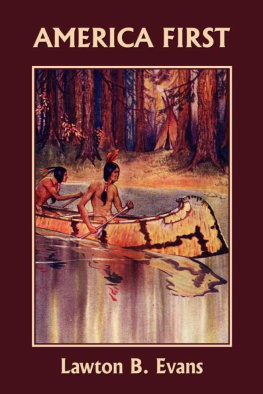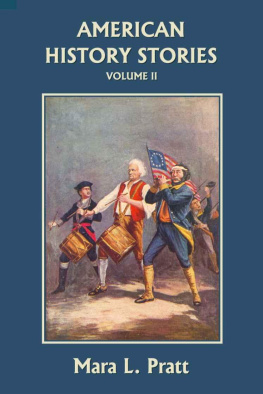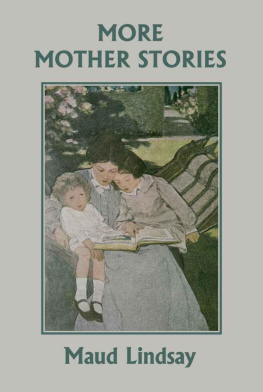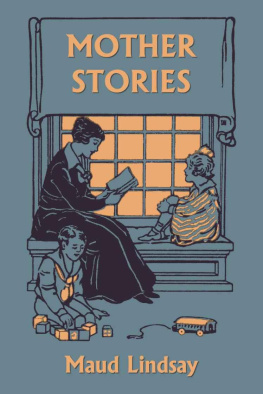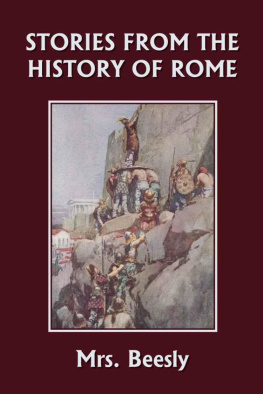America First100 Stories from Our History
by
Lawton B. Evans
Yesterday's Classics
Chapel Hill, North Carolina
Cover and Arrangement 2010 Yesterday's Classics, LLC
All rights reserved. No part of this book may be reproduced or retransmitted in any form or by any means without the written permission of the publisher.
This edition, first published in 2010 by Yesterday's Classics, an imprint of Yesterday's Classics, LLC, is an unabridged republication of the work originally published by Milton Bradley Company in 1920. This title is available in a print edition (ISBN 978-1-59915-209-7).
Yesterday's Classics, LLC
PO Box 3418
Chapel Hill, NC 27515
Yesterday's Classics
Yesterday's Classics republishes classic books for children from the golden age of children's literature, the era from 1880 to 1920. Many of our titles are offered in high-quality paperback editions, with text cast in modern easy-to-read type for today's readers. The illustrations from the original volumes are included except in those few cases where the quality of the original images is too low to make their reproduction feasible. Unless specified otherwise, color illustrations in the original volumes are rendered in black and white in our print editions.
Introduction
When children advance beyond the nursery age, no story is so wonderful as a true story. Fiction to them is never as appealing as fact. I have often been faced with the inquiry: whether or not a story is a true one. The look of gratification, when told that "it actually happened," was most satisfying to me as a story-teller.
The nearer a story is to the life and traditions of the child, the more eagerly it is attended. True stories about our own people, about our neighbors and friends, and about our own country at large, are more interesting than true stories of remote places and people. We naturally are interested in our own affairs, and the nearer they are to us the greater the interest we feel.
That history is just a long, thrilling story of the trials and triumphs of pioneers and patriots is well known to those who have had to do with the teaching of history to youthful minds. That the dry recital of political and governmental history does not interest children is also well known. History should be made vital, vibrant, and personal if we expect children to be stirred by its study.
To gratify the love of children for the dramatic and picturesque, to satisfy them with stories that are true, and to make them familiar with the great characters in the history of their own country, is the purpose of this volume.
It is hoped that through appeal to youthful love of adventure, this collection of stories, covering the entire range of American history, will stimulate the ambition and strengthen the patriotism of those young citizens whose education has been the constant concern of the author for many years.
Augusta, Ga
Contents
Leif, the Lucky
L EIF was a bold Norseman, and was called "Lucky" because he came safely through so many dangers. He was the bravest seaman of his race, and the sailors believed that whatever boat carried him would come safely into port, no matter how fierce the storm.
When voyagers from the far seas brought word to Iceland that fair lands covered with forests lay to the west, for they had seen them, Leif the Lucky called for thirty-five strong and true men. "Let us sail to this country, and get wood for our ships, and perhaps gold and silver to sell to the kings of Europe," he said. The men came forward and the ship set sail in the summer.
They went by way of Greenland, where they stopped for more news of the strange lands, and then sailed southwest for many days. The first place they saw was a land of ice and mountains. This was probably Newfoundland. Then they reached a level country covered with trees. This was probably Nova Scotia. Still sailing onward, the little ships with their brave crews came to a beautiful country abounding in trees, grass, and flowers. Here they landed, and carried all their baggage ashore with them. The place was so beautiful, they resolved to spend the winter there, and at once set about building houses. This was probably somewhere in Rhode Island.
When the Norsemen had built their houses, Leif said to his men, "Let us explore the land; some of us will stay to guard the houses, and the rest will find out what there is to see." So they set forth into the interior.
Soon they came upon an abundance of grapevines hanging from trees and covered with luscious fruit. Leif was delighted, and at once named the country Vinland, or the Land of Vines. So they gathered grapes, and cut wood for their ships, and built more houses, and settled down to spend the winter in this delightful spot. The cold came on, but the Norsemen did not mind it, for they had plenty of food and great fires; besides which, they were accustomed to cold weather.
In the spring they loaded their ships with timber, and sailed for home. Here they narrated their marvelous story of the new land. Leif offered his ship to his brother, Thorwald, and told him he might go and spend a winter in Vinland. So Thorwald fitted himself out and started for the new country, but he was not as lucky as his brother. He found the homes that had been built by those who had been before him; but the Indians attacked his party one night, and killed Thorwald with a poisoned arrow. He was buried on the shore, and his men set sail for home as soon as the weather allowed them to leave.
About eight hundred years after this, a skeleton clothed in armor was found buried in the earth at the head of Narragansett Bay. No one knew who it was; but we have every reason to believe that it was the remains of the brave old Norse warrior, Thorwald, or, maybe, of one of his followers. At any rate, the Skeleton in Armor has been the subject of much romance and poetry, and the traditions of the Norsemen have been handed down to us as sagas in the writing of the seafaring Icelanders.
How the Spaniards Conquered Mexico
T HE one thing the early Spaniards wanted above all else was gold. For it they were willing to abandon their homes and families in the Old World, undergo all kinds of hardships and suffering, treat the Indians with great cruelty, and often imperil their own lives. Thus we see what men will do when possessed of a greed for wealth!
In Cuba there lived a Spanish gentleman named Hernando Cortez. He was the son of wealthy parents, and he had studied law. But when nineteen years of age, he had run away from home to find adventures in America. He possessed wonderful courage and great command over men; but by nature he was very cruel. He loved gold, as all the others did in those days, but he loved power and adventure as much as he did wealth.
Cortez heard stories about the wonderful wealth of the King of Mexico. It was said that gold was so common among them that the very people ate and drank from golden vessels. The King was said to live in a palace so covered with gold that it shone like the sun, while he and all his attendants were believed to wear gold embroidered clothes every day. These fabulous stories were told by the natives, and the Spaniards were wild with excitement.
Cortez was placed at the head of an expedition designed to conquer Mexico, and with him were the bravest of the Spanish captains and the wildest adventurers in the New World. Nothing suited Cortez better than this expedition, and with hope he and his men set forth.
The ruler of Mexico was the proud Montezuma. He was far beyond the ordinary Indian in his ways and manners. He lived in a palace, and fared sumptuously upon the dainties of his land. Was it not said of him that he ate fresh fish, brought every day from the coast by runners who came in relays over two hundred miles? Around him was every kind of comfort and luxury, and Mexico, the capital city, showed many evidences of a high civilization.

